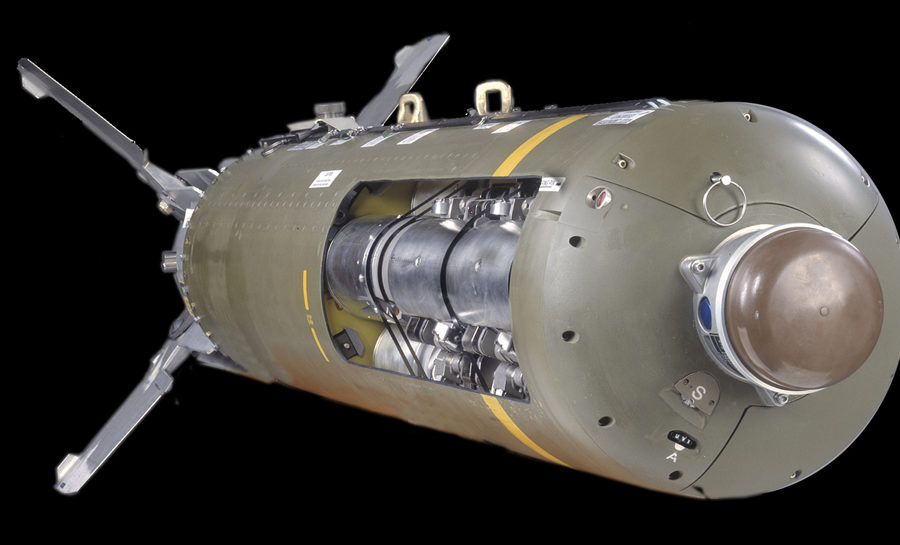SFW is a tactical area weapon used against massed stationary or moving armor and ground vehicles.
The munitions dispenser contains a payload of 10 BLU-108 submunitions, each containing four skeet-shaped copper disks totaling 40 lethal, target-seeking projectiles. The skeet’s active laser and passive IR sensors can detect a vehicle’s shape and IR signature; if no target is detected, the warhead detonates at a preset time. Primary targets are massed tanks, armored personnel carriers, and other self-propelled targets.
SFW can be delivered from high altitude and in adverse weather. It debuted in combat in Iraq in 2003. DOD ceased cluster munition procurement in 2007 and has only employed the weapons in combat once since 2003.
CBU-105 was the only standard USAF cluster munition that met the less-than-one-percent failure rate previously mandated by DOD for use beyond 2018. DOD has since reversed course, retaining existing weapons for deterrence on the Korean Peninsula.
USAF is now testing the 2,000 lb-class Next Generation Area Attack Weapons (NGAAW) which replaces explosive submunitions with a high-fragmentation warhead, reducing the risk of unexploded munitions injuring noncombatants.
Contractor: Textron Systems.
First Flight: Circa 1990.
IOC: 1997.
Active Variant: •CBU-105. CBU-97 casing with Wind-Corrected Munitions Dispenser (WCMD) tail kit.
Dimensions: Length 7.7 ft, diameter 15 in.
Performance: Delivers 40 lethal projectiles over an area of about 500 ft x 1,200 ft.
Guidance: IR targeting in each warhead; INS (via WCMD tail kit predispersal) and GPS-data (via aircraft, prerelease).
Warhead: Shaped charge and blast fragmentation.
Integration: A-10C, B-1B, B-52H, F-15E; F-16C/D, (tested on MQ-9).


